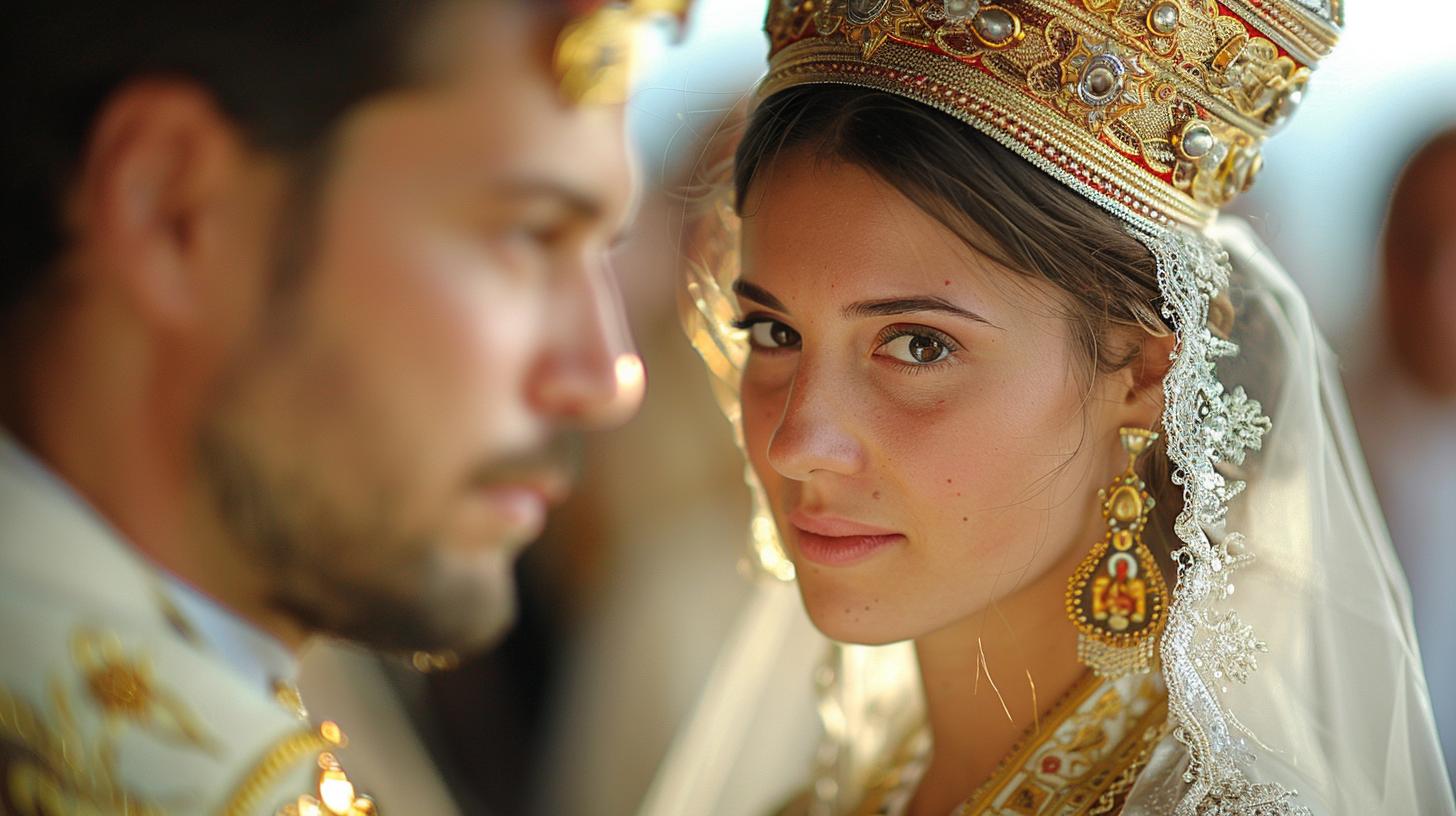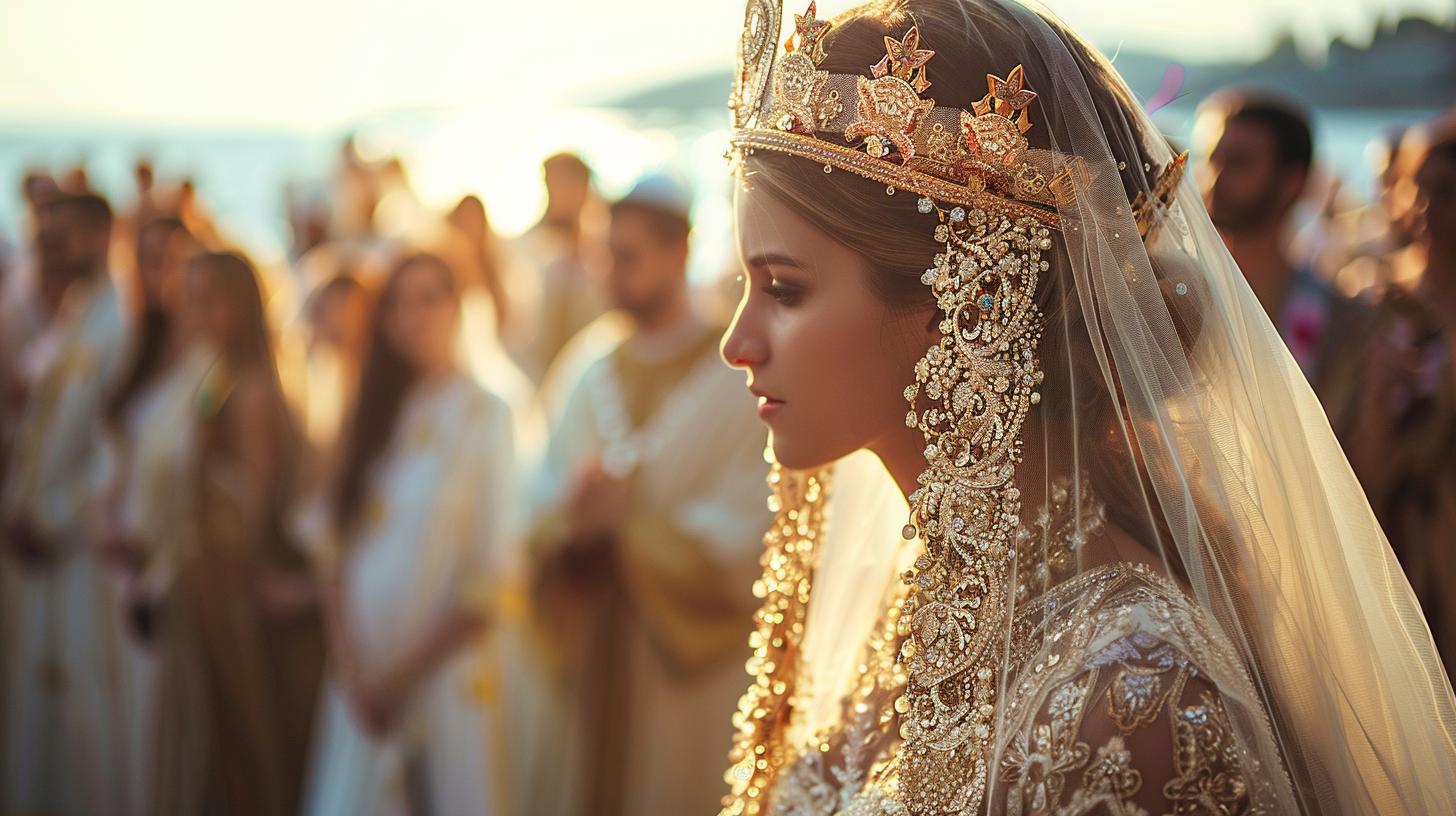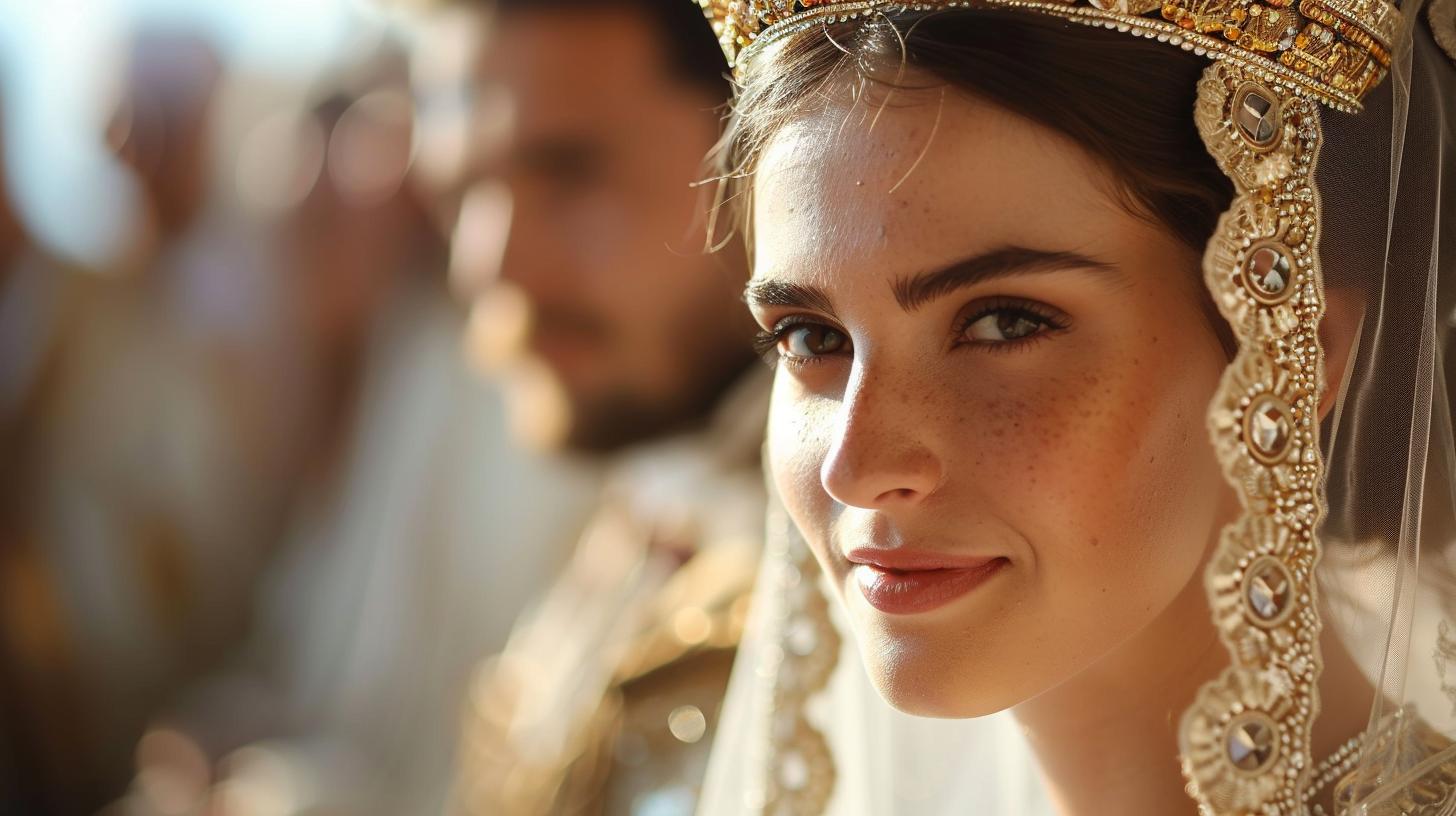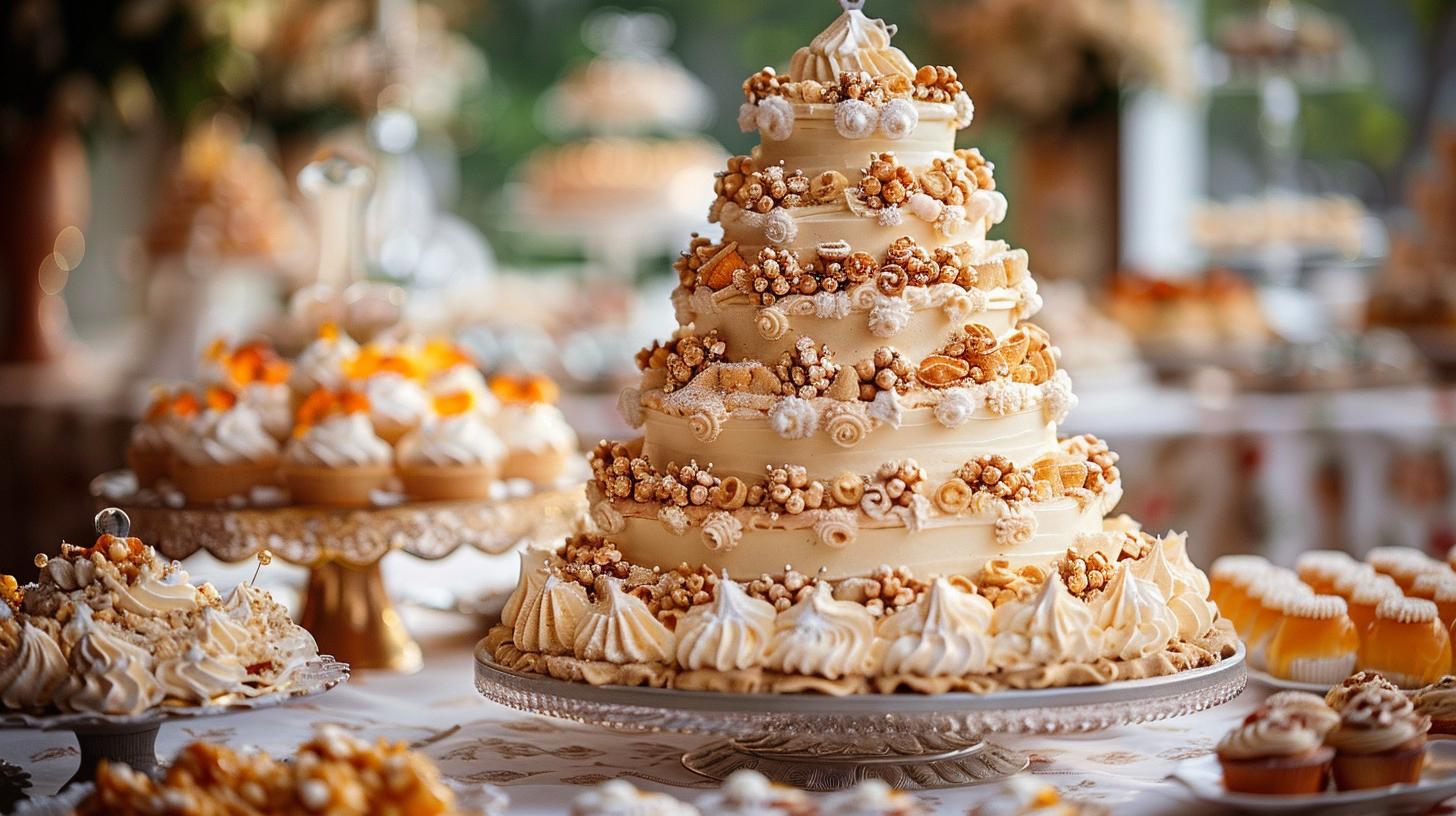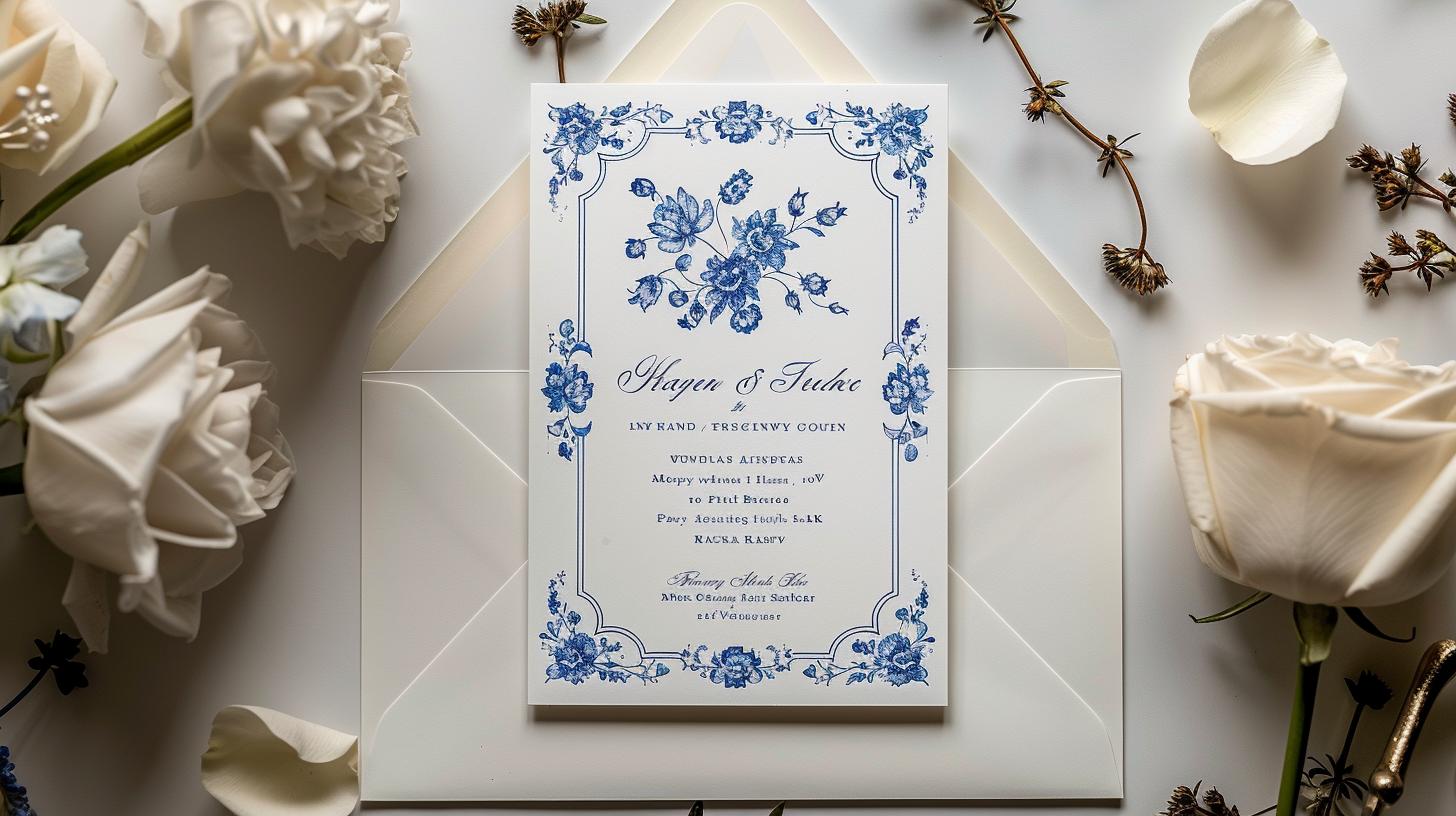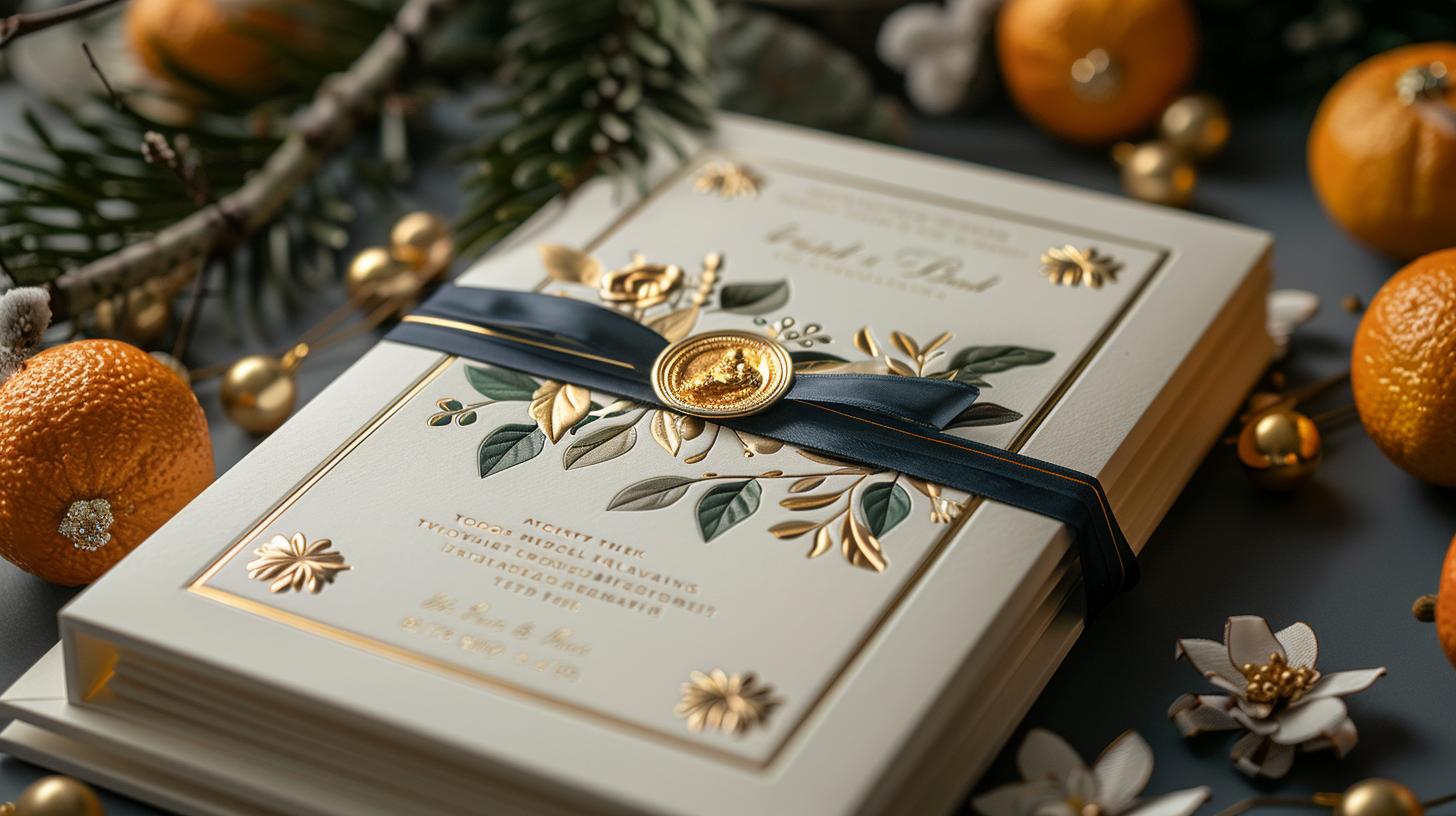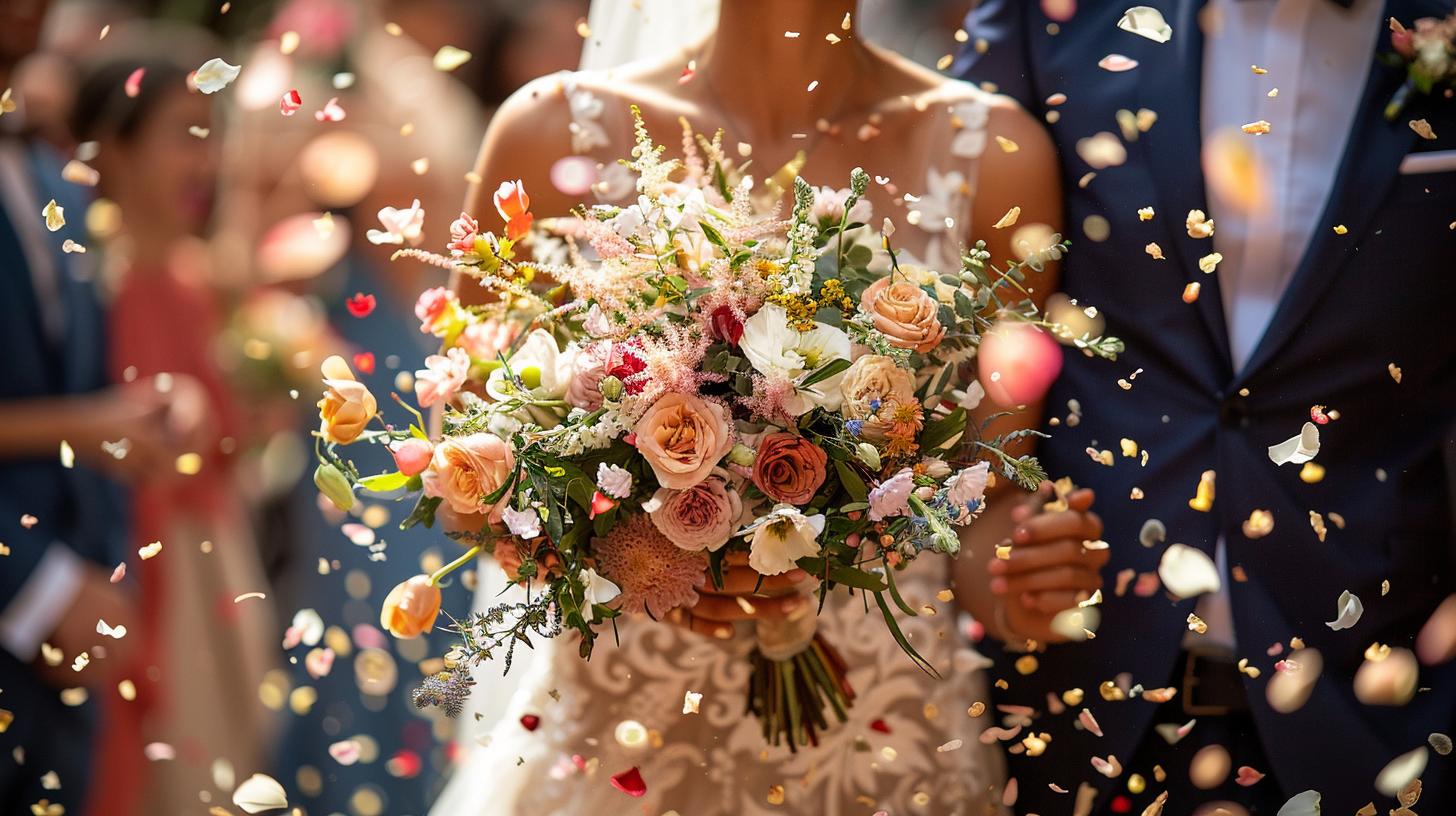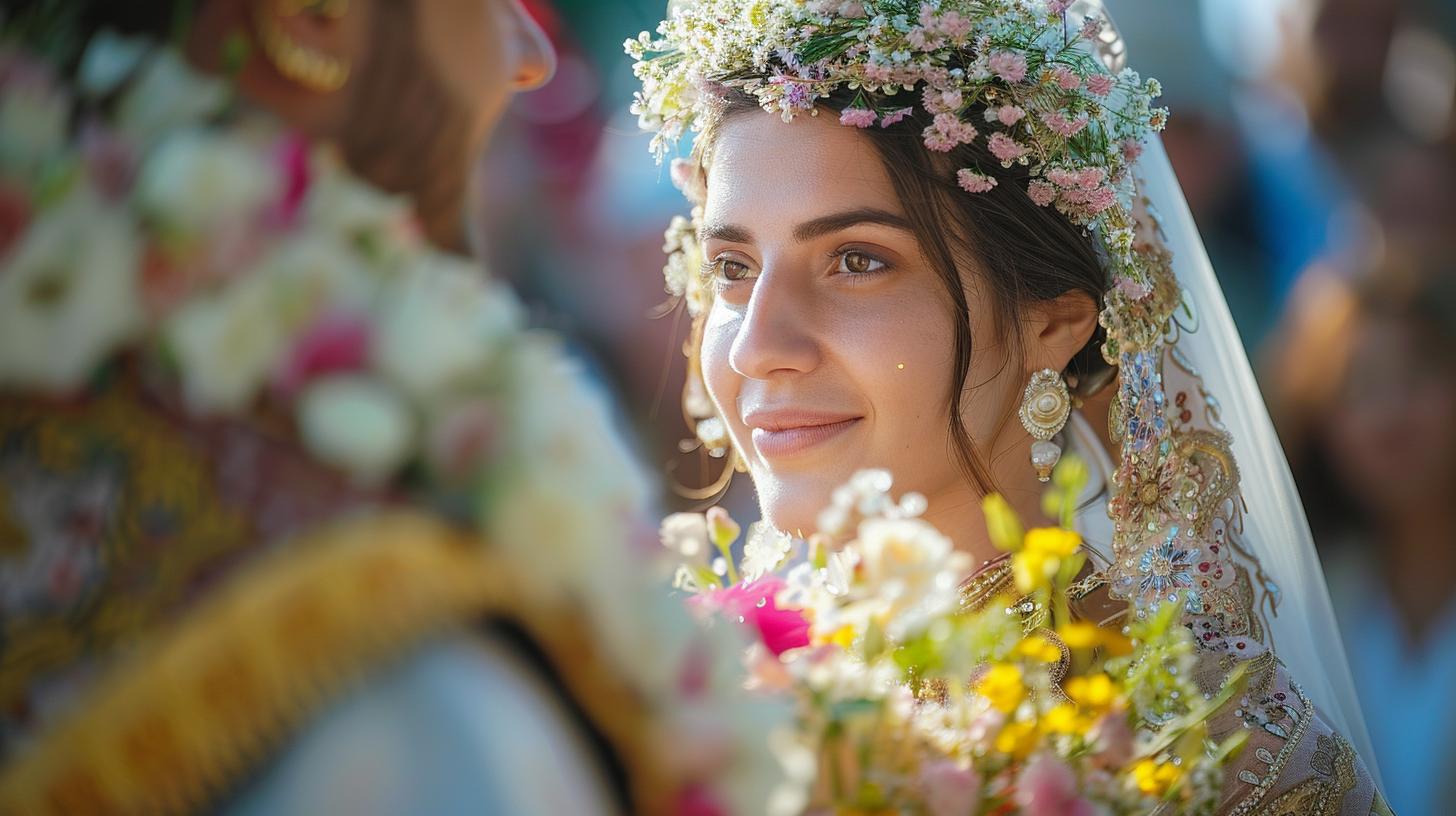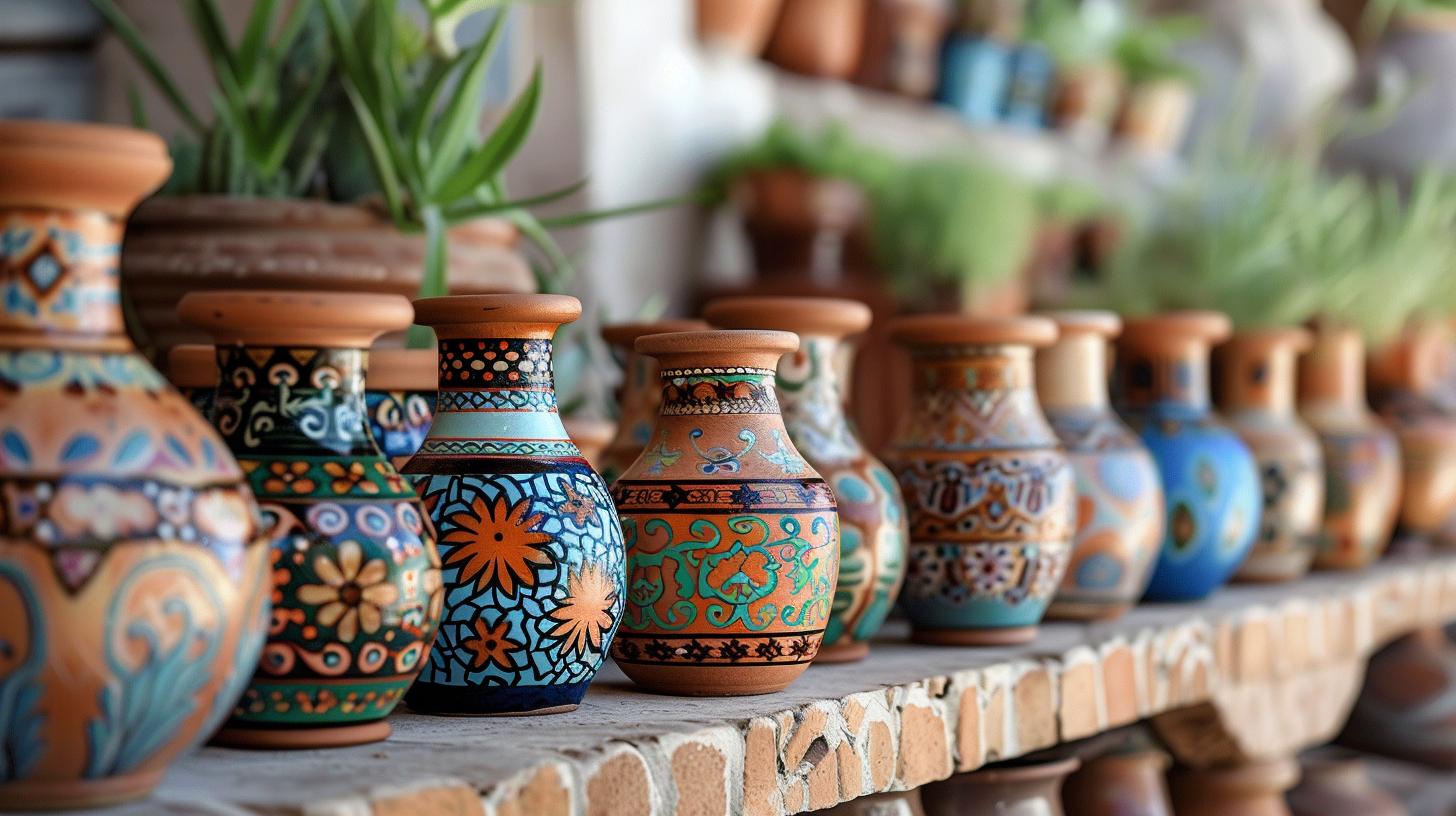Traditional Greek Wedding Ceremony: A Deep Dive into Rich Customs and Rituals
The traditional Greek wedding ceremony is rich in cultural and historical significance. It celebrates the union of two individuals and their families through a series of rituals that have evolved over time.
Various customs take place before, during, and after the wedding, highlighting the importance of family, community, and faith. This article explores the key elements that define a traditional Greek wedding ceremony.
Historical and Cultural Context of Greek Weddings
The historical and cultural context of Greek weddings showcases the rich traditions and values passed down through generations. Rooted in religious significance and community engagement, these weddings reflect important aspects of Greek society.
Evolution of the Ceremony
The Greek wedding ceremony has undergone significant transformations over the centuries. Initially, ancestral practices and local customs dictated how weddings were celebrated. The roots can be traced back to ancient Greece, where weddings not only signified the union of two individuals but also marked an important social contract between families.
Over time, the influence of the Orthodox Church integrated spiritual elements into the ceremony. From the Byzantine period onward, weddings began to adopt religious rites, emphasizing the sacramental aspect of marriage.
This evolution encapsulated various layers of meaning, transitioning from cultural rituals to formal ecclesiastical ceremonies.
Elements of the wedding ceremony, such as the exchange of rings and the crowning of the couple, find their origins in ancient practices.
These symbols have been preserved and are integral to contemporary Greek weddings, showcasing the blend of historical fervor with modern celebration.
Importance of Marriage in Greek Culture
Marriage holds a vital role in Greek culture, embodying themes of family, honor, and community bonding. The institution of marriage is often seen as a crucial milestone, representing not only the connection between partners but also the alliance of families.
Such unions form an essential part of the social structure in Greek society.
The act of marrying is imbued with cultural significance. It is celebrated as a rite of passage that conveys mutual respect and support from families and friends.
In the eyes of the Greek Orthodox Church, marriage transcends a personal commitment, symbolizing the sacred covenant between the couple and God.
Marriage is also associated with responsibilities, particularly regarding raising children and continuing family traditions.
- Marriage as a communal event, reinforcing family ties.
- Societal expectations regarding wedding customs and practices.
- The significance of religion in marital life and celebrations.
In conclusion, the historical and cultural context of Greek weddings illustrates a dynamic blend of tradition, spirituality, and community.
The enduring essence of these ceremonies emphasizes the critical role of marriage within Greek society, shaped by centuries of evolution and cultural significance.
Pre-Wedding Rituals and Customs
Pre-wedding rituals and customs are integral parts of Greek wedding traditions, reflecting the families’ values and beliefs. These practices often involve significant familial participation, setting the stage for the union of the couple.
Choosing the Koumbaro and Koumbara
One of the earliest and most important tasks for the couple involves selecting their koumbaro (male witness) and koumbara (female witness). These individuals play vital roles throughout the wedding ceremony and beyond.
Criteria for Selection
Typically, the koumbaro and koumbara are chosen from within close family or friends. They should embody qualities such as faith, integrity, and a deep understanding of the couple’s values. Often, it’s expected that they will also take on the role of godparents for the couple’s future children.
Responsibilities
The koumbaro and koumbara are responsible for various aspects of the wedding, including assisting with planning, managing the ceremony details, and ensuring that traditions are honored. Their participation highlights the communal spirit of Greek weddings and the importance of family bonds.
Groom Shaving Ritual
On the eve of the wedding, a special ritual is performed for the groom. This grooming ceremony symbolizes purification and the new beginning he is about to embark on.
Significance of the Ritual
The shaving ritual is steeped in symbolism.
Traditionally, it represents the groom’s transition from singlehood to married life. Family and friends often gather to witness this rite, reinforcing social ties and honoring the moment.
Elements of the Ritual
The groom is usually shaved by a close male family member, often in a light-hearted atmosphere that celebrates camaraderie.
Bridal Party Preparations
Bridal party preparations are also filled with meaningful customs that enhance the couple’s journey toward the altar.
The focus during this time is on the bride, establishing both a nurturing environment and festive excitement.
The Bride’s Attire
Before the ceremony, it is customary for the bride to don her wedding attire with the help of her closest friends and family. This moment often includes a mix of special stories, laughter, and emotional support, emphasizing the bonds among the women in her life.
Beauty Rituals
The bride typically undergoes several beauty treatments, including hair and makeup, to ensure she looks her best. Traditional elements, such as wearing something old, new, borrowed, and blue, are often included as tokens of good luck and blessings.
Gathering of the Bridal Party
Once the bride is ready, the bridal party often gathers for a ceremonial toast or small meal, which serves to relax the bride while fostering camaraderie. This helps alleviate pre-wedding jitters as they prepare to celebrate the upcoming union.
Wedding Attire and Etiquette
The traditional attire worn during a Greek wedding reflects cultural significance and variations in style. This section outlines the typical clothing choices for the bride, groom, and guests, as well as the etiquette surrounding these ceremonial events.
Traditional Bridal Attire
A Greek bride often dons an exquisite gown that symbolizes her cultural heritage. This dress is typically white or ivory, representing purity and new beginnings. The gown may feature intricate lace or embroidery, showcasing the craftsmanship and artistry of Greek fashion.
Accessories are also significant; brides may wear a veil, which can vary in length and style, adding an element of elegance.
Traditionally, brides in some regions also include specific pieces of jewelry that have been passed down, enhancing their connection to family traditions.
Groom’s Attire
The groom’s outfit is equally important and often complements the bride’s attire. A common choice is a tailored suit, generally in darker shades like navy or charcoal gray. The suit may be paired with a crisp white shirt and a tie or bowtie that matches the wedding colors.
Groom’s accessories can include cufflinks, a pocket square, and sometimes a boutonnière that reflects the wedding’s floral theme.
In some cases, husbands-to-be may wear traditional Greek attire, which can be a blend of modern styles mixed with regional motifs.
Regardless of the specific choice, the groom’s look should harmonize with that of the bride, embodying a united front for the upcoming ceremony.
Guest Dress Code
The dress code for guests at a Greek wedding is typically formal or semi-formal, reflecting the ceremonial nature of the event. Attire choice is vital, as it demonstrates respect for the couple and the cultural traditions involved.
Guests commonly wear elegant dresses, suits, or stylish outfits that suit the wedding’s overall tone.
Women’s Attire
Women often wear long gowns or cocktail dresses, with attention to color and embellishments that fit the season or wedding theme. Accessories like statement jewelry and elegant heels are also popular.
Men’s Attire
Men are expected to wear suits or dress pants with a formal shirt. Depending on the couple’s preference, ties may be required, adding a polished touch to their appearance.
Considerations for Attire
Bright colors are generally encouraged, avoiding white to respect the bride’s attire.
It’s also suggested that guests check for any specific themes or requirements provided in the wedding invitation.
Overall, adhering to the dress code helps enhance the festive atmosphere while honoring the couple and their families.
Guests are crucial in creating the celebratory ambiance that is characteristic of Greek weddings.
The Wedding Ceremony Program
The wedding ceremony program encompasses the essential structure and flow of the ceremony, ensuring that each significant component is thoughtfully incorporated. This guide highlights the sequence of events, the pivotal role of the priest, and the involvement of the congregation during this sacred celebration.
Order of Events
The order of events in a traditional Greek wedding ceremony is meticulously planned to reflect the solemnity and joy of the occasion. It typically unfolds as follows:
- Processional: The ceremony begins with a formal procession, where the bridal party enters the church, often accompanied by traditional music.
- Welcome and Opening Prayers: The priest welcomes the guests and offers prayers, setting the spiritual tone for the service.
- Doxology: This is a hymn of praise, inviting all present to glorify God during the ceremony.
- The Betrothal Service: This part includes the exchange of rings, symbolizing the couple’s commitment.
- The Service of Crowns: The couple is crowned with stephana, representing their union and new roles as a married couple.
- Communal Blessing: The priest bestows blessings upon the couple and the guests.
- The Common Cup: The ritual of sharing a common cup of wine is performed, symbolizing the couple’s shared life.
- Closing Prayers and Recessional: The ceremony concludes with prayers, and the couple exits together, marking the start of their new journey.
The Role of the Priest
The priest plays a crucial role in the wedding ceremony, acting as both an officiant and a spiritual guide.
His responsibilities encompass the following:
- Leading the Service: The priest leads the entire ceremony, ensuring the proper execution of rituals and prayers.
- Blessing the Couple: He invokes God’s blessings on the union, emphasizing the spiritual significance of marriage.
- Reading Scripture: Selected readings from the Bible are delivered, offering wisdom and insight into the sacred bond of marriage.
- Guiding Participants: The priest encourages active participation from the congregation, fostering a sense of community and support for the couple.
Congregational Participation
The involvement of the congregation is an essential aspect of a Greek wedding ceremony, creating a communal atmosphere that embodies love and support.
The attendees partake in various ways, including:
- Witnessing the Ceremony: Family and friends gather to witness and celebrate the union, sharing in the couple’s joy.
- Reciting Prayers: Portions of the prayers are often recited in unison, reinforcing the collective faith of those present.
- Offering Blessings: Guests may offer their blessings and well-wishes during pivotal moments of the ceremony, symbolizing their support.
- Participating in Music and Song: Traditional hymns and chants sung by the congregation enhance the spiritual experience of the ceremony.
The Betrothal Service
The Betrothal Service marks the beginning of the wedding ceremony, establishing a sacred bond between the couple.
This service consists of multiple rituals that signify the commitment the couple is making to each other and to their faith.
Doxology and Petitions
The service begins with a Doxology, a formal hymn of praise that aims to glorify God. This sacred invocation sets a reverent tone, inviting divine blessings upon the couple. Following the Doxology, the priest leads a series of petitions, which are special prayers that ask for God’s grace and guidance for the couple.
These petitions often include requests for health, prosperity, and harmony in their lives together.
The congregation may respond to the petitions with a unified “Amen,” reinforcing their collective support for the couple.
This communal aspect highlights the importance of family and friends as part of the wedding, encouraging them to partake in the solemn commitment being made.
The Exchange of Rings
One of the most significant moments in the Betrothal Service is the Exchange of Rings. This ritual signifies the legal and spiritual unification of the couple in the eyes of God and the Church.
During this part of the ceremony, the priest blesses the wedding rings, a symbol of eternal love and fidelity.
- The rings are typically placed on the right hand, as the right side symbolizes virtue within Biblical tradition.
- The koumbaro, who serves as the officiant for this part of the ceremony, exchanges the rings between the couple three times.
This triadic action serves to embody the Holy Trinity, reminding the couple of their faith as the foundation of their marriage.
Once the rings are on their fingers, they hold a profound meaning.
They represent the commitment to one another and the sacred promises made before God, family, and friends. The couple is now legally and spiritually bound, and this rite emphasizes their readiness to embark on their journey together.
The Service of the Crowns
The Service of the Crowns is a pivotal moment in a traditional Greek wedding, symbolizing the unity and sacred bond formed between the couple. This part of the ceremony is filled with rich symbolism and ritualistic elements, which underscore the significance of their commitment to one another.
The Crowning
The crowning, or the placing of the crowns (known as stephana), represents the couple’s new status as husband and wife. The crowns are traditionally made from flowers, olive leaves, or even precious metals, signifying glory, honor, and the sanctity of their marriage.
During this ritual, the priest blesses the crowns and places them on the heads of both the bride and groom.
The act of crowning not only enhances the visual beauty of the ceremony but also reflects the fulfillment of the Gospel’s teaching about marriage.
The crowns are often connected by a ribbon, illustrating the unity and bond shared by the couple. As they wear these crowns, the bride and groom embody the dignity and responsibility that comes with their new life together.
Readings from the Gospel
The readings from the Gospel take place following the crowning, adding a spiritual dimension to the ceremony. These scriptural passages emphasize the importance of love, commitment, and the responsibilities that come with marriage.
They often include references to the creation of man and woman and the establishment of marital union as a sacred institution.
Throughout the readings, the priest may highlight key themes such as patience, tolerance, and love’s enduring nature, offering wisdom from biblical texts that set a foundation for the couple’s life ahead.
This portion of the service serves to remind the newlyweds of their vows in the eyes of God and their community.
The Common Cup
The ritual of the Common Cup symbolizes the couple’s shared life and experiences, as they drink from a single cup of wine. This act signifies their willingness to support each other through the highs and lows of marriage.
The wine itself represents joy and celebration, echoing the notion that their union should be filled with happiness and blessings.
As they sip from the cup, the couple expresses their commitment to each other, pledging to coexist harmoniously and share their lives.
Following this, the priest often offers prayers for their health, prosperity, and happiness, reinforcing the importance of community in supporting the couple’s new journey.
Symbolism in the Ceremony
The traditional Greek wedding ceremony is rich in symbols that represent profound meanings. Each element plays a significant role in conveying the couple’s love, faith, and the blessings of their union.
The following aspects illustrate the importance of symbolism in the context of this sacred event.
The Candles and Light of Christ
In Greek weddings, candles hold deep significance. The couple usually holds candles, known as lambathes, during the ceremony, symbolizing the light of Christ illuminating their path together. This act is more than a ritual; it represents the couple’s commitment to walking in faith and embracing the divine presence throughout their marriage.
The act of lighting the candles signifies the invitation for Christ to be at the center of their lives. The candles also embody hope, purity, and the bright future awaiting the couple.
As they shine brightly, they reflect the love and joy that surrounds the union, emphasizing the importance of spiritual guidance in their journey together.
The Dance of Isaiah
A vital part of the wedding ceremony is the Dance of Isaiah, which takes place following the crowning of the couple. This dance symbolizes the joy and celebration of their new life together.
It is common for the family and guests to join in, creating a festive atmosphere that embodies the communal support surrounding the couple.
As the couple dances, they are often led in circles, symbolizing the endless nature of their love and commitment.
The circular movements represent the cycle of life and the unity that marriage brings. This joyful celebration encourages everyone present to partake in the happiness of the couple, reflecting the intertwining of lives and families.
The Koufeta (Sugar Coated Almonds)
Koufeta, or sugar-coated almonds, are a notable tradition in Greek weddings. These sweet confections carry powerful symbolism, representing fertility, health, and prosperity for the couple. Typically, five almonds are given to guests, signifying wishes for the couple’s life together: health, wealth, happiness, fertility, and longevity.
During the ceremony, koufeta may be tossed over the newlyweds as a blessing. This act reflects the community’s support and goodwill toward the couple, wishing them a future filled with sweetness and abundance.
The combination of the hard almond and the sweet coating symbolizes the challenges and joys of married life, emphasizing the importance of resilience and love in their journey.
Post-Ceremony Traditions
After the wedding ceremony, various enjoyable and symbolic traditions follow, enhancing the celebration of love and unity. These customs highlight the communal aspect of Greek weddings, fostering joy and togetherness among family and friends.
Traditional Wedding Dances
One of the most anticipated components of any Greek wedding celebration is the traditional wedding dances. These dances embody the cultural heritage of Greece, showcasing vibrant music and rhythm. The participation of family and friends in the dances brings everyone closer, fostering a sense of community and shared joy.
The Kalamatianos
This dance is a staple at Greek weddings, characterized by its lively steps and playful movements. Typically, a line is formed with the bride and groom at the front, leading their guests in circles, celebrating their new union.
The Tsamiko
A more traditional dance that adds a touch of elegance and masculinity. Dancers perform intricate footwork, often showcasing acrobatic moves, while others cheer them on, adding to the festive atmosphere.
The Ikariotikos
This dance is rooted in the island of Ikaria and symbolizes joy and celebration.
It’s typically danced in a circle, with participants encouraging one another to showcase their best moves.
Throwing Money for Prosperity
A joyful and lively tradition involves guests throwing money at the bride and groom during their dance performances. This act symbolizes the community’s wishes for prosperity and abundance in their new life together.
The couple is often paraded around the dance floor, with guests eagerly tossing bills to shower them with blessings.
This custom serves not only as a form of celebration but also as a literal expression of well-wishing, hoping to provide the newlyweds with financial stability and a fruitful life ahead.
It’s a vibrant moment filled with laughter and good cheer.
Wishing the Couple a Prosperous Life
Following the dances and celebrations, guests often take a moment to offer their heartfelt wishes to the couple. The community’s blessings are vital in reinforcing their union, with attendees expressing hopes for love, happiness, and fertility.
Gift Giving
Guests are traditionally expected to bring gifts for the couple. These can range from household items to monetary gifts, all intended to assist the newlyweds in establishing their shared life.
Personal Blessings
Alongside physical gifts, guests may share personal anecdotes or blessings, often rooted in family traditions or cultural proverbs, which further reinforce the importance of love and commitment in marriage.
Through these post-ceremony traditions, the celebration fosters a sense of belonging and communal joy. Each dance, blessing, and act of generosity represents the collective hopes of the family and friends wishing to support the couple as they embark on their journey together.
Greek Orthodox Wedding Texts
Greek Orthodox wedding texts encompass a range of prayers and readings that convey the spiritual significance of the marriage sacrament. These texts are integral to the ceremony, guiding both the couple and the congregation through the sacred moments of their union.
Key Prayers and Blessings
At the heart of the Greek Orthodox wedding ceremony are several important prayers and blessings. These invocations seek divine favor for the couple, reflecting the deep spiritual roots of marriage within the Orthodox faith.
The Lord’s Prayer
This prayer is recited to invoke the presence of God. It emphasizes forgiveness, unity, and the holiness of the marriage commitment. It serves as a reminder that couples are not just bound to each other, but also to their faith and community.
Petitions for Blessings
During the celebration, petitions are often declared by the priest, asking for God’s blessings upon the couple. These prayers typically include requests for a long and prosperous life together, enriched with love, health, and happiness.
Blessing of the Rings
The priest blesses the wedding rings before placing them on the couple’s hands. This act signifies the sacred agreement and the bond they are forming, underlining the theme of eternity with the circular shape of the rings.
Traditional Readings and their Meanings
Readings from the Scriptures play a vital role in the ceremony, providing wisdom and guidance for the newlyweds. These passages are chosen for their relevance to love, commitment, and spirituality.
Readings from the Epistles
Often, the priest selects passages from the Epistles, particularly from Saint Paul’s letters that emphasize love, patience, and understanding.
These texts remind the couple of the importance of mutual respect and support in their journey together.
Selections from the Psalms
Psalms are typically read during the ceremony to celebrate the joy of marriage. These readings express thanksgiving and praise to God while highlighting the beauty of love, faith, and connection between the couple and their community.
Gospel Readings
Gospel verses are sometimes included to further anchor the couple’s union in Christ. These readings reinforce the spiritual foundation of their marriage, reminding them that their love is a reflection of God’s love.
Frequently Asked Questions about Greek Weddings
This section addresses common inquiries about Greek weddings, providing insights into their duration, suitable dates, and gift expectations.
How long does the ceremony last?
A typical Greek wedding ceremony generally lasts between 45 minutes to an hour. The duration can vary depending on the specific customs of the families involved and the priest’s style.
During this time, various rituals and traditions are observed, enriching the experience for both the couple and the guests.
Traditional practices, like the Betrothal Service and the Service of the Crowns, contribute to the overall length.
Each segment involves important symbolism and communal blessings, all of which take time to perform properly. Therefore, guests can expect a solemn yet lively atmosphere throughout the ceremony.
What are the best days to marry?
Choosing an appropriate date for a wedding in Greek culture often involves considering religious calendars and personal significance.
Generally, couples steer clear of dates during the Epiphany, Holy Week, and the Lent period. These sacred times are regarded as unsuitable for joyous celebrations.
Besides avoiding certain religious observances, many couples also prefer to marry on weekends or significant family dates, as these times foster greater attendance and a festive spirit.
Each family’s tradition may vary, influencing the decision on the best date for the occasion.
Is it necessary to bring a gift?
Bringing a gift to a Greek wedding is customary. Many guests provide presents either from a designated gift registry or monetary gifts. Cash gifts are particularly valued, as they assist the couple in starting their new life together.
- Gifts often reflect the couple’s preferences and needs.
- While registries are common, cash is typically encouraged as it offers flexibility to the newlyweds.
- It is considered polite to include a card with personal wishes and congratulations for the couple.
Overall, gifts symbolize not only well wishes for the couple’s future but also support from family and friends as they embark on their new journey together.
Modern Adaptations of Traditional Greek Wedding Ceremonies
As society evolves, so do the customs surrounding weddings. Traditional Greek wedding ceremonies are no exception, adapting to contemporary trends while still honoring their rich heritage.
Destination Weddings
Many couples today choose to host destination weddings, often selecting picturesque locations that reflect their personal style. Greek islands, such as Santorini and Mykonos, have become popular choices. These serene settings provide a stunning backdrop for ceremonies and receptions.
Hosting a wedding abroad allows couples to create a unique experience for their guests, blending the beauty of Greek culture with breathtaking scenery.
Customization of Traditions
- Couples may incorporate local elements from their chosen destination, blending them with traditional Greek rituals.
- Unique venues, like cliffside terraces or quaint chapels, add a personalized touch to the ceremony.
- Guests often enjoy a vacation experience while celebrating the couple’s love, resulting in a memorable event.
Blending Cultures
Many modern Greek weddings reflect the diverse backgrounds of the couples involved.
When marrying partners from different cultural heritages, couples often merge traditions to create a ceremony that honors both families.
Incorporating Diverse Traditions
- The ceremony might include readings or rituals from each culture, showcasing mutual respect and unity.
- Reception festivities can feature traditional music and dances from both cultures, creating a lively and inclusive atmosphere.
- Culinary offerings may fuse Greek dishes with flavors from the other culture, delighting guests with a unique dining experience.
Contemporary Touches in Greek Orthodox Weddings
While maintaining the essence of Orthodox rituals, many couples are now introducing modern elements to their ceremonies.
This merge of old and new creates a rich tapestry of tradition and personal expression.
Personalizing the Ceremony
- Couples might opt for non-traditional floral arrangements or modern décor that reflects their style while respecting the sacred elements of the ceremony.
- Vows can be personalized, allowing for deeper expressions of love that go beyond traditional phrases.
- Photographers and videographers may employ innovative techniques to capture the day, ensuring memories are preserved in an artistic way.
Interactive Guest Experiences
- Interactive elements, such as photo booths or custom guest books, engage attendees and add a playful element to the celebration.
- Live music or DJs can incorporate both traditional and contemporary songs, providing a lively atmosphere for dancing.
- Some couples choose to include a “wedding website” where guests can interact prior to the event, getting familiar with traditions and dress codes.
.

